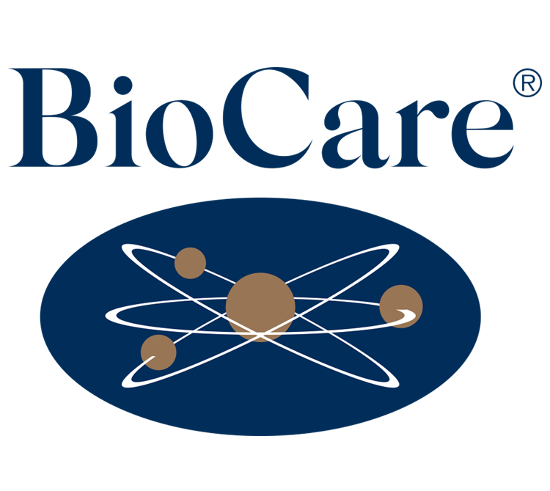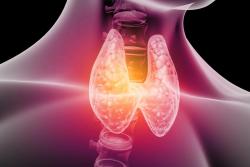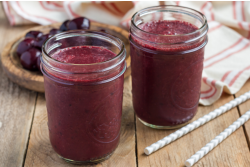Let me take you on a quick journey through time. And don’t worry, we won’t need a Tardis…
It’s circa 430 BC in ancient Greece, where young Hippocrates was at the height of his ‘career’. Amongst many legacies the Father of Medicine left behind him, he was also the earliest known physician to study the health benefits of fibre and was well known for recommending wholegrains, for example.1 Fast forward to the early 1970s and it’s the work of two medics, Mr Denis Burkitt and Dr Hugh Trowell, who pioneered with their ‘Dietary Fibre Hypothesis’.2Their interest into this topic sparked upon their travels to East Africa, where they were intrigued by the lack of chronic diseases that were common in the Western world. They soon linked it to their high fibre intake and from that moment a lot of other papers came out, linking low fibre intake to diseases of the bowel, such as diverticulitis. The last stop on our journey starts in 2007, which saw the start of the Human Microbiome Project, a landmark project into the microorganisms living within us. Since then, it’s been a huge area of research, and has provided us with a wealth of new and fascinating information. Last but not least, we cannot finish our journey without mentioning Jeff Leach and the Human Food Project. Through following some indigenous tribes, mapping their microbiome and their diet, he’s also found that they eat a huge amount of fibre (even up to 150g a day3), have a wider diversity of microbes in the gut in comparison to us, and suffer from far fewer chronic diseases.
What’s this telling us though? Fibre is extremely important,4 yet so many of us are avoiding it. You may have been told that you have Irritable Bowel Syndrome (IBS) or Small Intestinal Bacterial Overgrowth (SIBO) and that one way of reducing your symptoms is to avoid foods such as wholegrains, onions, garlic, cruciferous vegetables (cabbage, broccoli), which are naturally high in fibre. Or you may simply avoid them because you know that eating some bread or salad will make you bloated or running to the toilet. None of us want to experience these symptoms and if there is an easy answer, of course we’ll follow it. But by reducing fibre, are we inadvertently damaging our health?
You might either advise, if you are a health practitioner, or follow, a low FODMAP (Fermentable Oligo-, Di-, Mono-saccharides And Polyols) diet – a diet that restricts a large number of foods that contain a high amount of different forms of dietary fibre. And, in fact, if you follow a low FODMAP approach, you are likely to experience improvements in your symptoms. But have you tried and failed? Or at least found it difficult? It is a very restrictive diet, so going out for a curry with friends or even making some soup might not be easy. Worst of all though, if you stop, your symptoms are likely to quickly creep back and you’re back to square one. A low FODMAP diet is like a sticking plaster, giving short-term relief, but not addressing the real issue. Moreover, in an era when most people only eat a fraction of foods available to them; mostly grains, potatoes, sugar and poor quality meat, it feels counterintuitive to restrict their diet even more, especially if that includes many nutritious foods.
So what do we do instead? Embrace fibre and support your gut microbiome. Recent studies seem to support this idea. One particular study compared the low FODMAP diet, with one supplemented with the prebiotic fibre galactooligosaccharides (GOS), in people with ‘functional gut disorders’.5 Both groups had significant reductions in symptoms, but symptom reduction persisted for 2 weeks with GOS but reappeared immediately when the low FODMAP diet was stopped. GOS supplementation also resulted in higher Bifidobacterium levels (a really important family of gut bacteria), while FODMAPS reduced colonies. More worryingly though, the low FODMAP diet increased the growth of Bilophila wadsworthia, which is normally only present in minute amounts in the human gut. This bacterium is produces hydrogen sulphide, which could cause IBS symptoms, damage to the mucosal lining, and could even favour pathogenic growth when in excess! What about SIBO, you may ask? Conventional view is that prebiotics & probiotics should be avoided with SIBO, however, there are several studies showing that both pre- and probiotic interventions6, 7, 8are not only beneficial, but also more effective and safe when compared to antibiotics.9
Despite popular belief, prebiotics also come in handy alongside anti-microbial protocols. In a clinical study on people with SIBO, the combination of the antibiotic rifaximin and guar gum eradicated SIBO in 87.1% of cases compared to 62.1% when using antibiotics alone.
It is often thought that prebiotic fibre feeds harmful bacteria and causes digestive symptoms.Even if this is theoretically possible, scientific studies to date show that prebiotics, including FOS (often unfairly ‘singled out’) have a neutral or even reduced effect on pathogenic bacteria.10 If you react to prebiotics, it is probably because they are creating positive changes to the gut microbiome, although perhaps too quickly, which indicates a need for a gradual increase instead. Two clinical studies found that although intestinal gas production increased following supplementation of prebiotics, this reduced back to the pre-administration levels after 2 to 3 weeks, indicating that our microbiome can indeed adapt to fibre intake.11,12 To help your body adapt to a high-fibre diet and reduce the chance of digestive symptoms, you can try sipping on peppermint and chamomile tea and practice abdominal massage and yoga for digestion, all of which can help reduce bloating.
The diversity and population mass of colonic bacterial species is highly correlated with the diversity and amount of vegetables consumed in the diet.13 The more different types of plants a person eats, the higher their gut microbiome diversity.14 Challenge yourself and write down all different types of fruit and vegetables you eat in a week. If it’s fewer than 25, try adding something new each week.
But of course, fibre, as important as it is, is not the silver bullet for all digestive problems, and we still need to think about other factors. In fact, by supporting our digestion, motility and terrain (healthy gut lining), we are more likely to achieve good results. So here are a few more things to consider:
Digestion - the good bugs favour fibre, while the ‘bad’ bugs might feed on leftovers of digestion (especially fats and proteins), so it’s important to make sure you’re properly digesting your foods. Low stomach acid causes prolonged presence of undigested carbohydrates in the small intestine, which feeds an overgrowth of bacteria. Medications such as proton pump inhibitors (PPIs) can also increase the risk of developing SIBO if taken long-term.15,16 Impaired bile synthesis and flow (e.g. due to gallstones or cholecystectomy) may also have a role to play since bile acids have anti-microbial properties.17 To support natural production of digestive juices, we need to make sure we eat slowly, in a relaxed environment. Also increase bile stimulating foods, particularly bitter leaves (e.g. rocket and watercress), artichoke, 18 turmeric, 19 chicory, radish, lemon juice and apple cider vinegar.
Motility - disordered motility or diverticulitis20 can further drive an overgrowth of abnormal bacteria. In particular, disturbed migrating motor complex (MMC) activity, which stimulates muscular contractions in the intestines, has been associated with SIBO.21 A recent study also showed that low ileocecal valve pressure was significantly associated with SIBO. 22 Vagus nerve regulation can also be used to increase gastric acid secretions23 and improve gut motility.24 It can be stimulated by whole body cold exposure,25 acupuncture,26 probiotics,27 and yoga.28, 29
Terrain – healthy gut lining and adequate mucus production helps the bacteria to stick to the gut walls and helps them thrive. Factors such as alcohol, stress, malnourishment (nutrients, not necessarily calories!), diets high in sugar and refined grains can all lead to damage to the gut. We also need a number of nutrients to aid continuous tissue repair, including zinc,30 choline, vitamin A,31 nucleotides32 or protein (especially the amino acid L-glutamine33).
So soluble fibre could be your gut’s best friend, even when you have IBS or SIBO. Maybe it is time that we put prebiotics back in their rightful place, and embrace them as a powerful therapeutic tool in our daily life and clinical practice?
Got a question?
The brand you can talk to:
We have a team of Nutritionists at the end of our advice line, open to you, for product support and advice (5 days a week). 0121 433 8702 or clinicalnutrition@biocare.co.uk
Or head to our advice page where you can find Healthnotes.
Not registered for an account with BioCare®?
You can register now to receive up to date news, product information and exclusive offers whether you are a consumer, practitioner or retailer.
References
1 Padayachee A et al. Complexity and health functionality of plant cell wall fibers from fruits and vegetables. Crit Rev Food Sci Nutr 2015 Apr 15
2 Johnson I.T., Southgate D.A.T. An Introduction to the Dietary Fibre Hypothesis. In: Dietary Fibre and Related Substances. Food Safety Series. Springer. 1994. Boston, MA
3 Leach JD. Rewild. A Collection of Essays from the Human Food Project. CreateSpace Independent Publishing Platform. 2015.
4 Chang SC et al Am J Clin Nutr. Fiber intake and total and cause-specific mortality in the European Prospective Investigation into Cancer and Nutrition cohort
2012 Jul;96(1):164-74
5 Huaman et al. Effects of Prebiotics vs a Diet Low in FODMAPs in Patients With Functional Gut Disorders.Gastroenterology. 2018 Oct;155(4):1004-1007.
6 Gaon D et al Medicina Effect of Lactobacillus strains (L. casei and L. Acidophillus Strains cerela) on bacterial overgrowth-related chronic diarrhea.
2002;62(2):159-63
7 Rosania R et al Effect of probiotic or prebiotic supplementation on antibiotic therapy in the small intestinal bacterial overgrowth: a comparative evaluation. Curr Clin Pharmacol 2013, 8(2):169-72 4
8 Lunia MK et al. Probiotics prevent hepatic encephalopathy in patients with cirrhosis: A randomized controlled trial. Eur J Gastroenterol Hepatol. 2014; 26(12): 1353-9.
9 Soifer LO et al.[Comparative clinical efficacy of a probiotic vs. an antibiotic in the treatment of patients with intestinal bacterial overgrowth and chronic abdominal functional distension: a pilot study]. Acta Gastroenterol Latioam 2010;40(4):323-7
10 Smith et al. Effect of a synbiotic on microbial community structure in a continuous culture model of the gastric microbiota in enteral nutrition patients. FEMS Microbiol Ecol 2012; 80 (1): 135-145.
11 Mego M. et al. Metabolic adaptation of colonic microbiota to galactooligosaccharides: a proof-of-concept-study. Aliment Pharmacol Ther. 2017;45(5);670-680.
12 Mego M. et al. Colonic gas homeostasis: Mechanisms of adaptation following HOST-G904 galactooligosaccharide use in humans. Neurogastroenterol Motil. 2017;29(9).
13 Lewis CA Enteroimmunology third edition Psy Press 2015 Caravelle Florida.
14 http://americangut.org/our-results-so-far/
15 Compare D et al. Effects of long-term PPI treatment on producing bowel symptoms and SIBO. Eur J Clin Invest. 2011; 41(4):380-6.
16 Lombardo L et al. Increased incidence of small intestinal bacterial overgrowth during proton-pump inhibitor therapy. Clin Gastroenterol Hepatol. 2010; 8(6): 504-8.
17 Ridlon JM et al. Bile acids and the gut microbiome. Curr Opin Gastroenterol. 2014; 30(3):332-8.
18 Holtmann G, et al. Efficacy of artichoke leaf extract in the treatment of patients with functional dyspepsia: a six-week placebo-controlled, double-blind, multicentre trial. Aliment Pharmacol Ther. 2003;18(11-12):1099-105.
19 Rasyid A et al. Effect of different curcumin dosages on human gallbladder. Asia Pac J Clin Nutr. 2002; 11 (4): 314-8.
20 Tursi A et al. Assessment of small intestinal bacterial overgrowth in uncomplicated acute diverticulitis of the colon. World J Gastroenterol. 2005; 11(18): 2773-6.
21 Deloose E et al. The migrating motor complex: control mechanisms and its role in health and disease. Nat Rev Gastroenterol Hepatol. 2012; 9(5): 271-285.
22 Roland BC et al. Low ileocecal valve pressure is significantly associated with small intestinal bacterial overgrowth (SIBO). Dig Dis Sci. 2014; 59(6):1269-77.
23 Debas HT, Carvajal SH. Vagal regulation of acid secretion and gastrin release. Yale J Biol Med. 1994;67(3-4):145-51.
24 Bonaz B, Sinniger V, Pellissier S. Vagal tone: effects on sensitivity, motility and inflammation. Neurogastroenterol Motil. 2016;28(4): 455-62.
25 Makinen TM et al. Autonomic nervous function during whole-body cold exposure before and after cold acclimation. Aviat Space Environ Med. 2008; 79(9):875-82.
26 da Silva MA, Dorsher PT. Neuroanatomic and clinical correspondences: acupuncture and vagus nerve stimulation. J Altern Complement Med. 2014;20(4):233-40.
27 Bravo JA et al. Ingestion of Lactobacillus strain regulates emotional behaviour and central GABA receptor expression in a mouse via the vagus nerve. PNAS. 2011;108(38):16050-5.
28 Streeter CC et al. Effects of yoga versus walking on mood, anxiety, and brain GABA levels: a randomized controlled MRS study. J Altern Complement Med. 2010;16(11):1145-52.
29 Brown RP, Gerbarg PL. Sudarshan Kriya yogic breathing in the treatment of stress, anxiety, and depression: part I-neurophysiologic model. 2005;11(1):189-201.
30 Sturniolo GC et al. Zinc supplementation tightens "leaky gut" in Crohn's disease. Inflamm Bowel Dis. 2001; 7 (2): 94-8.
31 S. van de Pavert et al. Maternal retinoids control type 3 innate lymphoid cells and set the offspring immunity. Nature. 2014; 508 (7494): 123-7.
32 Dancey C, Attree E, Brown K. Nucleotide supplementation: a randomised double-blind placebo controlled trial of IntestAidIB in people with Irritable Bowel Syndrome [ISRCTN67764449]. Nutrition Journal. 2006;5:16.
33 De-Souza DA, Greene LJ. Intestinal permeability and systemic infections in critically ill patients: Effect of glutamine. Crit Care Med. 2005; 33 (5): 1125-35.






